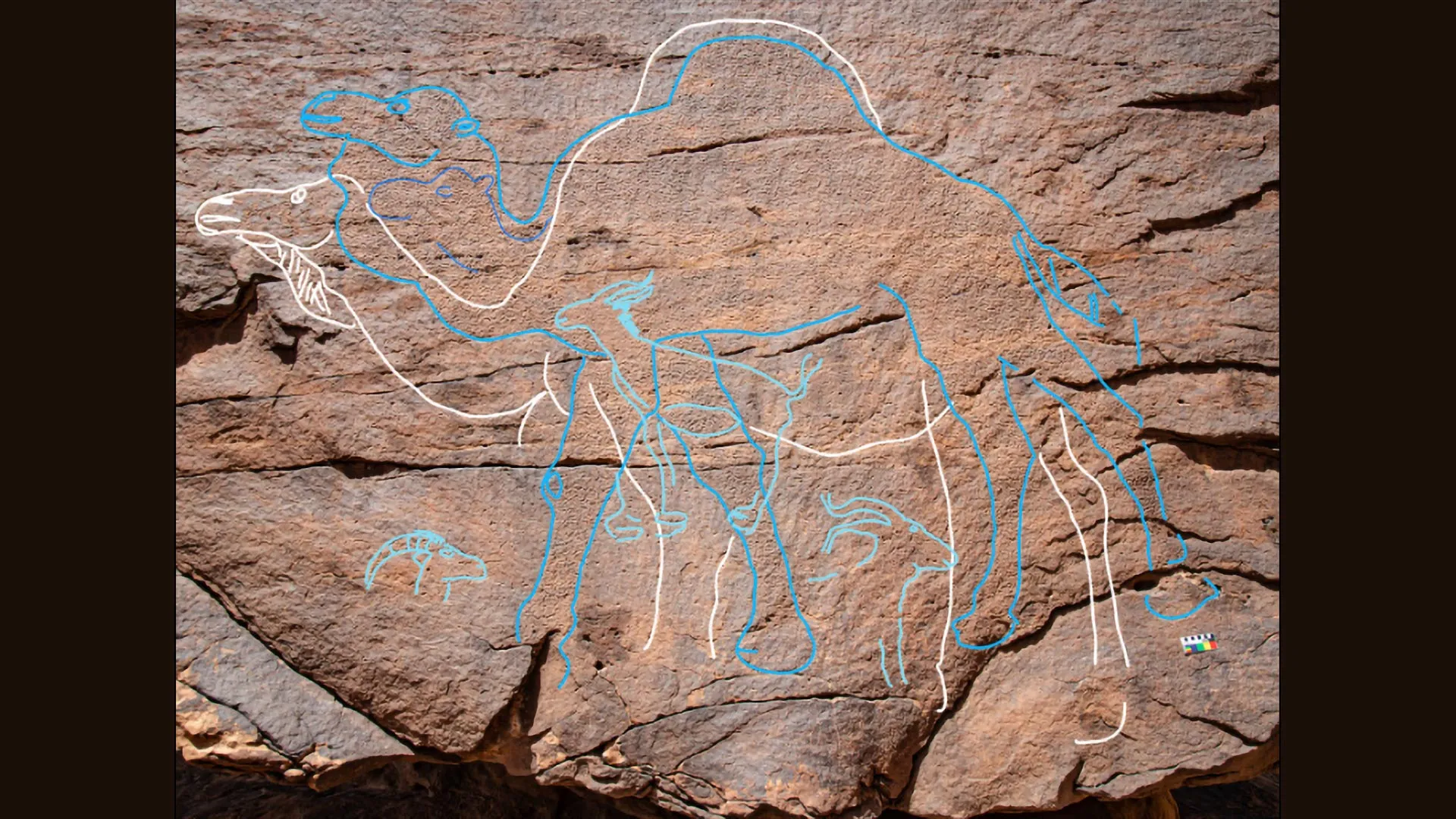12,000-year-old rock art found in Arabia reveals a lost civilization
- Date:
- October 11, 2025
- Source:
- Griffith University
- Summary:
- Archaeologists in Saudi Arabia discovered over 170 ancient rock engravings that may be among the earliest monumental artworks in the region. Created between 12,800 and 11,400 years ago, the massive figures were carved when water and life returned to the desert. The art likely marked territories and migration routes, revealing social and symbolic sophistication. Artifacts found nearby show early Arabian peoples connected to distant Neolithic communities.
- Share:

Recent research has revealed the crucial role of early human groups who settled in northern Arabia soon after the intensely dry period known as the Last Glacial Maximum (LGM). These communities followed the return of seasonal water sources and left behind an extraordinary record of their presence through monumental rock art.
An international team of archaeologists, coordinated by the Heritage Commission of the Saudi Ministry of Culture, uncovered the findings through the Green Arabia Project. The team included experts from the Max Planck Institute of Geoanthropology, KAUST (King Abdullah University of Science and Technology), University College London, Griffith University, and several other institutions.
Researchers documented over 60 rock art panels featuring 176 individual engravings across three previously unexplored locations: Jebel Arnaan, Jebel Mleiha, and Jebel Misma, situated along the southern edge of the Nefud Desert in northern Saudi Arabia.
The engravings, which depict animals such as camels, ibex, equids, gazelles, and aurochs, include 130 highly detailed and life-sized figures, some reaching up to 3 meters long and more than 2 meters tall.
Dating to between 12,800 and 11,400 years ago, the engravings correspond to a time when temporary lakes and rivers reappeared after centuries of extreme aridity.
Sediment analysis confirmed the existence of these ancient water sources, which would have provided essential support for human groups venturing into the desert interior and allowed them to survive in this challenging environment.
"These large engravings are not just rock art -- they were probably statements of presence, access, and cultural identity," said lead author, Dr. Maria Guagnin from Max Planck Institute of Geoanthropology.
Dr. Ceri Shipton, co-lead author from the Institute of Archaeology, University College London, said: "The rock art marks water sources and movement routes, possibly signifying territorial rights and intergenerational memory."
Unlike previously known sites where engravings were hidden in crevices, the Jebel Mleiha and the Jebel Arnaan panels were etched onto towering cliff faces, some up to 39 meters high, in visually commanding locations.
One panel would have required ancient artists to climb and work precariously on narrow ledges, underscoring the sheer effort and significance of the imagery.
Artefacts including Levantine-style El Khiam and Helwan stone points, green pigment, and dentalium beads suggest long-distance connections to Pre-Pottery Neolithic (PPN) populations in the Levant region.
However, the scale, content, and placement of the Arabian engravings set them apart.
"This unique form of symbolic expression belongs to a distinct cultural identity adapted to life in a challenging, arid environment," said Dr. Faisal Al-Jibreen, from the Heritage Commmission, Saudi Ministry of Culture.
"The project's interdisciplinary approach has begun to fill a critical gap in the archaeological record of northern Arabia between the LGM and the Holocene, shedding light on the resilience and innovation of early desert communities," said Michael Petraglia, lead of the Green Arabia project.
The study 'Monumental rock art illustrates that humans thrived in the Arabian Desert during the Pleistocene-Holocene transition' has been published in Nature Communications.
Story Source:
Materials provided by Griffith University. Note: Content may be edited for style and length.
Journal Reference:
- Maria Guagnin, Ceri Shipton, Faisal Al-Jibreen, Giacomo Losi, Amir Kalifi, Simon J. Armitage, Finn Stileman, Mathew Stewart, Fahad Al-Tamimi, Paul S. Breeze, Frans van Buchem, Nick Drake, Mohammed Al-Shamry, Ahmed Al-Shammari, Jaber Al-Wadani, Abdullah M. Alsharekh, Michael Petraglia. Monumental rock art illustrates that humans thrived in the Arabian Desert during the Pleistocene-Holocene transition. Nature Communications, 2025; 16 (1) DOI: 10.1038/s41467-025-63417-y
Cite This Page: